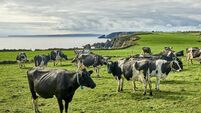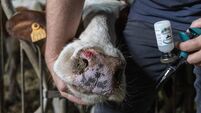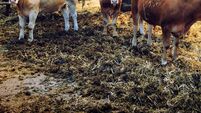Dairy herd size will grow and will be demanding
This will put pressure on resources. We think about cubicles, slurry storage, roadways and paddocks when resources are mentioned, but labour (workload) is often overlooked, and it will become limiting on dairy farms.
Last year, 12 dairy discussion groups completed a survey of labour usage on their farms. The aim was to:
¦ Quantify the labour input for each farm.
¦ Find the average labour input for the discussion group.
¦ Identify the most labour-efficient farms and the factors that make them so.
After completion, each farmer received both an individual and a group report. While anonymity was retained, each farmer could benchmark himself against the group and against the most labour-efficient farms.
Cur rently, 500 far mers have completed this analysis for their farm.
Some of the key points learned from the 500 farms related to cows per labour unit, total farm labour per day, and an acceptable working week.
One labour unit was classified as 1,800 hours for work in the year. The average herd size was 95 cows for the 500 herds, and the hours of work required per livestock unit was 33. This is equivalent to one labour unit managing 55 livestock units.
National Farm Survey data, which represents the average herd size in Ireland, shows that, nationally, just 40 livestock units are being managed per labour unit.
The total hours worked per day were 13.6, with the farmer accounting for 9.1, family members 2.7, and employed labour 1.9 hours. Farm variation, within this breakdown, created debate within discussion groups, especially where the farmer or family were working long hours.
All farmers were asked: “What is an acceptable number of hours to work per week?” The average response was 59 hours (ranging from 39 to 80).
The actual hours worked were 64 hours per week. This difference is the starting point for any discussion on labour efficiency on a dairy farm.
Once farmers identified that they wanted to work fewer hours, they had a target.
Some of the key differences between the average farms and the top 10% are outlined in the accompanying table.
One of these differences was that the top 10% finished their working day about one hour earlier.
This was a result of starting the evening milking about one hour earlier.
The far mers examined many aspects associated with labour efficiency: for example, grassland, breeding, machinery use, office work, facilities.
Calving and calf rearing are in full flow at the moment. See below what farmers said in the discussion groups’ survey about reducing labour input for these two jobs.
¦ Article by Pat Clarke, Teagasc Animal & Grassland Research and Innovation Prog ramme, from Today ’ s Farm magazine









